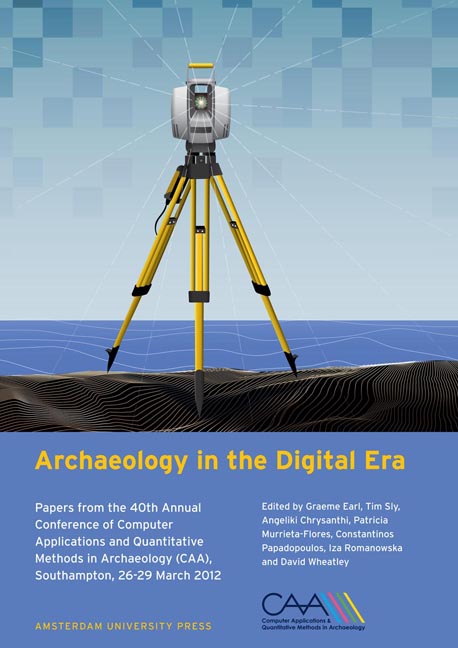 Archaeology in the Digital Era
Archaeology in the Digital Era Archaeology in Broad Strokes: Collating Data for England from 15OO BC to AD 1086
Published online by Cambridge University Press: 16 February 2021
Summary
Abstract:
Landscape and identities: the case of the English landscape 1500 BC - AD 1086 (EngLald) is a new five- year project, bringing together multiple large datasets in order to map continuity and change in English archaeology from the middle Bronze Age to the Domesday book. This paper discusses issues encountered in collating many very large datasets and presents one possible solution for synthesising such a varied mix of data into a single explorable dataset, based upon spatial and temporal proximity and monument type.
Keywords:
GIS, Large Datasets, Data Collation
Introduction
Beginning during the second half of 2011, Landscape and Identities: the case of the English landscape 1500 BC to AD 1086 (or EngLald for short) is a five-year project funded by the European Research Council, based at the University of Oxford. The central concept of EngLald lies in bringing together as many large spatial datasets as possible in order to try to understand identity, continuity and change in the English landscape from the middle Bronze Age to the Domesday book.
Inspiration for this project came from several previous similar surveys of England's archaeology, all of which took a particular period and / or dataset as their central focus (Roberts & Wrathmell 2003; Taylor 2007; Yates 2007). EngLald is attempting to take a much wider temporal view in order to discover and explain how the rural landscape of England came into being. The middle Bronze Age was taken as a starting point as that is the time from which farming started to settle down into a more fixed pattern, making a more permanent impact upon the landscape than earlier forms of agriculture. The Domesday book was chosen as an endpoint, partly due to its detailed national character and partly due to most of the dominant agricultural trends of the following centuries already being in a quite well- developed state by that time. Our methodology is based around a national survey, followed by a series of regional case studies.
Datasets
In order to achieve what we have set out to attempt, we are sourcing and collecting many different datasets. The first of these is the National Mapping Programme (NMP), an English Heritage directed project to map archaeological features from aerial photography.
- Type
- Chapter
- Information
- Archaeology in the Digital EraPapers from the 40th Annual Conference of Computer Applications and Quantitative Methods in Archaeology (CAA), Southampton, 26-29 March 2012, pp. 307 - 312Publisher: Amsterdam University PressPrint publication year: 2014


